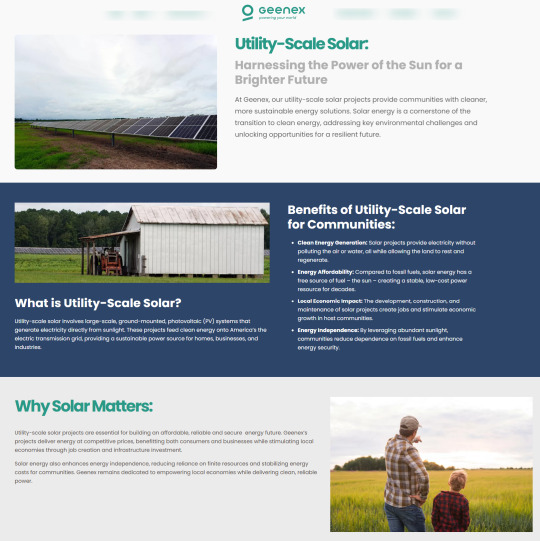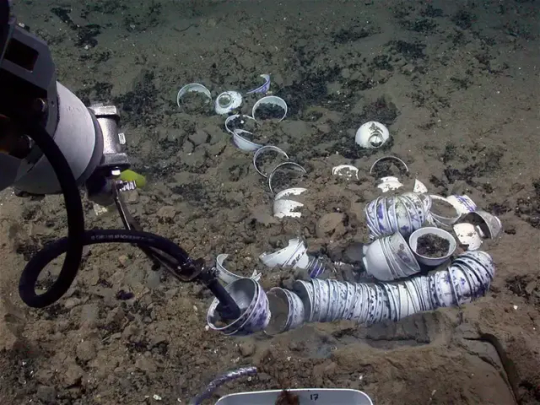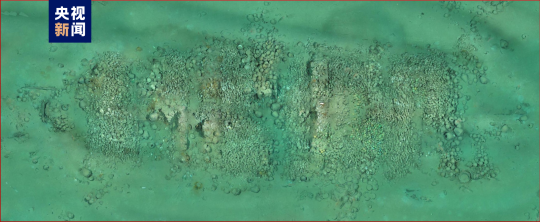#Utility Scale Projects
Explore tagged Tumblr posts
Text
How Are Solar Panels Recycled? A Step-by-Step Breakdown
As the solar industry grows, so does the challenge of managing old and damaged panels. But what happens to solar modules at the end of their lifespan? This guide breaks down the solar panel recycling process step by step, from collection and material separation to reclaiming valuable components like silicon, glass, and metals. Learn how innovative recycling technologies are making solar energy even more sustainable and what the future holds for end-of-life solar panels.
#Solar Panel Recycling#Solar Panel Disposal#Solar Module Recycling#Solar Panel Recycling near me#Solar Panel Recycling companies#ESG report#environmental social and governance report#Commercial Solar Site#Solar Recycling#ESG report consulting#We recyle solar#Recycle solar panel near me#ESG Reporting Companies#ESG sustainbility report#end of life solar panels#Decommission#Decommissioning Solar Panels#Decommission Solar Systems#Solar Panel Decommissioning#Decommissioning Solar Power Plants#Solar Farm Decommissioning#Utility Scale Solar Projects#Utility Scale Projects#Solar waste management companies#Solar Waste Management Consulting Services#Solar Panel Disposal near me#Solar Panel Removal near me#Waste from solar panels#Solar Panel Removal & reinstall near me#Solar panel waste
2 notes
·
View notes
Text

Get Solar-Ready with eSunScope’s Expert Site Survey
#commercial solar power india#utility scale solar projects india#residential solar panels jaipur#solar solutions rajasthan#rooftop solar panels installation in india#sustainable energy provider rajasthan#solar panel installation rajasthan#solar energy#solar panels#solar panel company dubai
0 notes
Text

Top Tier Solar Solutions in Charlotte, NC - Geenex
At Geenex, our utility-scale solar projects provide communities in Charlotte, NC, with cleaner, more sustainable energy solutions through top-tier solar development.
1 note
·
View note
Text
Top Benefits of Utility-Scale Solar Projects for Businesses and Communities

In the quest for sustainable energy solutions, Utility-Scale Solar projects are emerging as transformative contributors to economic growth and environmental well-being. These large-scale solar power projects offer a range of advantages, benefiting businesses, communities, and the planet. Let’s explore the top benefits that make utility-scale solar a vital component of the renewable energy landscape.
1. Cost-Effective Energy Solution
Utility-scale solar projects generate power at a significantly lower cost compared to traditional fossil fuels. By harnessing the abundant energy of the sun, businesses can reduce operational expenses and stabilize energy costs. This scalability ensures that communities also benefit from affordable electricity, particularly in regions with limited access to conventional power sources.
2. Environmental Sustainability
One of the most prominent advantages of utility-scale solar is its contribution to a cleaner environment. Solar power is a renewable energy source that produces no greenhouse gas emissions during operation. By adopting utility-scale solar, communities can significantly reduce their carbon footprint and combat climate change.
3. Energy Independence and Security
Utility-scale solar enhances energy security by reducing reliance on imported fossil fuels. Businesses gain control over their energy sources, ensuring a stable supply and protecting against price volatility in global energy markets. Communities, in turn, experience improved energy reliability and resilience.
4. Job Creation and Economic Growth
Solar power projects drive job creation across various sectors, from engineering and construction to operations and maintenance. Utility-scale solar farms stimulate local economies by offering employment opportunities and attracting investments to the region. This economic activity bolsters the financial stability of surrounding communities.
5. Scalable and Efficient Power Generation
Unlike smaller renewable energy systems, utility-scale solar projects generate vast amounts of electricity, meeting the needs of large businesses and entire communities. Their scalability allows for efficient utilization of land resources while contributing to regional and national energy grids.
6. Enhanced Community Infrastructure
Many utility-scale solar initiatives contribute to community development by supporting local infrastructure projects. Companies involved in solar power projects often collaborate with governments to invest in schools, roads, and healthcare facilities, ensuring long-term benefits for residents.
7. Supporting Climate Goals
For businesses and communities committed to achieving sustainability targets, utility-scale solar is an effective way to meet renewable energy and emissions reduction goals. It aligns with global efforts to transition to a low-carbon economy, showcasing leadership in environmental responsibility.
8. Promoting Innovation in Renewable Energy
Utility-scale solar projects often incorporate advanced technologies, such as solar tracking systems and battery storage solutions. These innovations improve the efficiency and reliability of solar power, paving the way for a more resilient and sustainable energy future.
Conclusion
Utility-scale solar is revolutionizing the way businesses and communities access and utilize energy. By investing in solar power projects, stakeholders can reap economic, environmental, and social benefits while contributing to a cleaner, greener world. Embracing utility-scale solar is not just a smart business decision; it’s a commitment to a sustainable future for everyone.
0 notes
Text
What are the Different Types of PV Connection Solutions?
Owing to the numerous benefits of Solar PV Energy Solutions, the demand for solar cells is on the high end. The solar system comprises semiconductors that convert sunlight into electricity. This way of producing electricity is not only cheap but also environmentally friendly. Depending upon the functional and operational specifications, PV connection solutions can be broadly categorized into three categories.
Grid Connected or Utility-Interactive Systems
The foremost advantage of grid-connected Solar PV Energy Solutions is that it is much more economical when compared to other types of PV solar systems. Though this system does not offer any outage protection, it’s design flexibility makes it a popular choice among households. This system can be further divided into grid systems with batteries and without batteries.
A Grid-Connected System Without Battery Here the solar PV system is integrated with the grid, a conventional electricity infrastructure. The PV system absorbs the sun’s radiation and converts it into DC, which is converted into AC through an inverter. In the grid system, you have to least worry about whether or not your system is producing enough energy, as up to 20% of your energy needs will be fulfilled by the grid alone.
A Grid Connected System with a Battery
Solar PV Energy Solutions offer better energy independence when backed by a battery. It minimizes the dependency on grid electricity alone and assures sufficient electricity generation from the grid when the solar system is not generating enough energy.
Stand Alone System
Also known as an Off-Grid solar system, this system is ideal for rural areas where the system can’t be connected to the grid system. As this system lacks energy storage, this Solar PV Energy Solution is suitable for water pumps, ventilation fans and solar heating systems. However, this PV system is quite expensive and demands regular checks for terminal corrosion and battery electrolyte levels.
Hybrid System
This type of Solar PV Energy Solution uses a combination of power sources to enhance the power generation capacity. They are often supported by a battery to enhance their capacity. One significant advantage of this system is that it can draw energy from multiple energy sources like wind and hydrocarbons. This makes them more robust and independent of any one energy source.
At Acerenewtech, our expert engineers suggest the best Solar Industry Company in India depending on your purpose, budget, and location; feel free to contact us for any inquiries.
0 notes
Text
#technology#mw solar project provider#mw solar panel arrays#utility-scale solar projects#large-scale solar installations#solar epc services#solar epc provider#solar epc provider company#solar epc services provider#solar epc services provider company
0 notes
Text
Dandelion News - February 15-21
Like these weekly compilations? Tip me at $kaybarr1735 or check out my Dandelion Doodles!
1. Solar farms managed for nature boost bird abundance and diversity, new study finds

“There were more than twice as many farmland birds in the well-managed solar farms compared with the intensively farmed land, and nearly 16 times as many woodland birds. […] Overall, diversity was 2.5 times higher, while woodland birds were nine times more diverse.”
2. Washington judge blocks Trump’s gender-affirming care ban, says it's unconstitutional in multiple ways

“This marks the second time in a week that a judge has stood in the way of Trump’s attacks on trans kids. [… The ruling grants] a temporary restraining order that halts enforcement of provisions in Trump’s directive that would cut off federal funding to medical institutions that provide gender-affirming care to minors.”
3. Fog harvesting could provide water for arid cities

“17,000 sq m of mesh could produce enough water to meet the weekly water demand of [… the] urban slums. 110 sq m could meet the annual demand for the irrigation of the city's green spaces. Fog water could be used for soil-free (hydroponic) agriculture, with yields of 33 to 44lb (15 to 20kg) of green vegetables in a month.”
4. Audubon Applauds Bipartisan Federal Effort to Protect Delaware River Basin with Critical Reauthorization Bill

“The bill would […] ensure long-term conservation and restoration efforts, expand the official definition of the basin to include Maryland, and prioritize projects that serve small, rural, and disadvantaged communities. […] The watershed provides important year-round habitats and critical migratory stopovers for approximately 400 bird species[….]”
5. mRNA vaccines show promise in pancreatic cancer in early trial
“Half of the people in the study — eight of the participants — responded to the vaccine, producing T cells that targeted their tumors. […] Just two of the patients who had a response to the vaccine had their cancer return during the three-year follow- up, compared to seven of the eight who did not respond to the vaccine treatments.”
6. Minn. Lt. Gov. Flanagan Makes It Official; She's running for U.S. Senate

“[Flanagan has] “championed kitchen-table issues like raising the minimum wage, paid family and medical leave, and free school meals.” If elected, Flanagan, a tribal citizen of the White Earth Nation, would become the first Native American female U.S. senator in history.”
7. Federal Funding Restored for Low-Income Alabama Utility Assistance After Outcry

“A program meant to help low-income Alabamians pay their utility bills has resumed two weeks after it was canceled due to an executive order from President Donald Trump. […] “We can confirm the funds are reaching those affected by the previous pause[….]””
8. Modeling study suggests Amazon rainforest is more resilient than assumed

“[Previous] studies were either conducted with global climate models that used a simplified representation of convection [or were on a regional scale….] According to the computations, mean annual precipitation in the Amazon does not change significantly even after complete deforestation.“
9. States are moving forward with Buy Clean policies despite Trump reversal

““Buy Clean is a great example of how states and other nonfederal actors can continue to press forward on climate action, regardless of what the federal government does,” said Casey Katims, executive director of the U.S. Climate Alliance, a bipartisan coalition of two dozen governors.”
10. The rewilded golf courses teeming with life

“A wildflower meadow, ponds, scrub habitat, coastline and even an area of peat bog can be found on this little 60-acre (24-hectare) plot, which boasts roe deer, otters, lizards, eels and a huge array of insects and birds.”
February 8-14 news here | (all credit for images and written material can be found at the source linked; I don’t claim credit for anything but curating.)
#hopepunk#good news#nature#us politics#solar power#solar panels#solar energy#birds#biodiversity#gender affirming care#transgender#trans rights#trans healthcare#water conservation#habitat#migratory birds#vaccines#vaccination#mrna vaccine#pancreatic cancer#cancer#native american#alabama#low income#amazon rainforest#rainforest#executive orders#climate action#golf course#habitat restoration
980 notes
·
View notes
Text
« The culture of the 21st century – on an increasingly planetary scale – is oriented around the practical principles of utility, effectiveness and impact. The worth of anything – an idea, an activity, an artwork, a relationship with another person – is determined pragmatically: things are good to the extent that they are instrumental, with instrumentality usually defined as the capacity to produce money or things.
[…O]ur culture of instrumentality has settled like a thick fog over the idea that some activities are worth pursuing simply because they share in the beautiful, the good, or the true. No amount of birdwatching will win a person the presidency or a Beverly Hills mansion; making music with friends will not cure cancer or establish a colony on Mars. But the real project of humanity – of understanding ourselves as human beings, making a good world to live in, and striving together toward mutual flourishing – depends paradoxically upon the continued pursuit of what Hitz calls ‘splendid uselessness’.
[…N]ot all useless activity is actually good. Binge-watching television, being hooked on drugs, or spending one’s day doing nothing but eating are useless activities, to be sure. But truly splendid uselessness nourishes and elevates us spiritually, rather than simply providing a rush of mental or bodily pleasure. The output is always more than the input: the contemplation of nature, the joy of music-making, and even the study of mathematics can be rich and ennobling activities that, while also being pleasurable, reward the intellect and the soul. And the more we engage in these kinds of activities, the more we hone our sensibility and capacity for receptivity […].
While rewarding each of us internally, splendid uselessness enriches the world beyond us. Like the fertile soil of a well-kept garden, a life of splendid uselessness provides abundance far beyond one’s immediate aims, […] tends to overflow, to bring more goodness and beauty into being: one good poem can spark a dozen others […]. »
— Joseph M Keegin, "A life of splendid uselessness is a life well lived"
772 notes
·
View notes
Text
"A 1-megawatt sand battery that can store up to 100 megawatt hours of thermal energy will be 10 times larger than a prototype already in use.
The new sand battery will eliminate the need for oil-based energy consumption for the entire town of town of Pornainen, Finland.
Sand gets charged with clean electricity and stored for use within a local grid.
Finland is doing sand batteries big. Polar Night Energy already showed off an early commercialized version of a sand battery in Kankaanpää in 2022, but a new sand battery 10 times that size is about to fully rid the town of Pornainen, Finland of its need for oil-based energy.
In cooperation with the local Finnish district heating company Loviisan Lämpö, Polar Night Energy will develop a 1-megawatt sand battery capable of storing up to 100 megawatt hours of thermal energy.
“With the sand battery,” Mikko Paajanen, CEO of Loviisan Lämpö, said in a statement, “we can significantly reduce energy produced by combustion and completely eliminate the use of oil.”
Polar Night Energy introduced the first commercial sand battery in 2022, with local energy utility Vatajankoski. “Its main purpose is to work as a high-power and high-capacity reservoir for excess wind and solar energy,” Markku Ylönen, Polar Nigh Energy’s co-founder and CTO, said in a statement at the time. “The energy is stored as heat, which can be used to heat homes, or to provide hot steam and high temperature process heat to industries that are often fossil-fuel dependent.” ...
Sand—a high-density, low-cost material that the construction industry discards [Note: 6/13/24: Turns out that's not true! See note at the bottom for more info.] —is a solid material that can heat to well above the boiling point of water and can store several times the amount of energy of a water tank. While sand doesn’t store electricity, it stores energy in the form of heat. To mine the heat, cool air blows through pipes, heating up as it passes through the unit. It can then be used to convert water into steam or heat water in an air-to-water heat exchanger. The heat can also be converted back to electricity, albeit with electricity losses, through the use of a turbine.
In Pornainen, Paajanen believes that—just by switching to a sand battery—the town can achieve a nearly 70 percent reduction in emissions from the district heating network and keep about 160 tons of carbon dioxide out of the atmosphere annually. In addition to eliminating the usage of oil, they expect to decrease woodchip combustion by about 60 percent.
The sand battery will arrive ready for use, about 42 feet tall and 49 feet wide. The new project’s thermal storage medium is largely comprised of soapstone, a byproduct of Tulikivi’s production of heat-retaining fireplaces. It should take about 13 months to get the new project online, but once it’s up and running, the Pornainen battery will provide thermal energy storage capacity capable of meeting almost one month of summer heat demand and one week of winter heat demand without recharging.
“We want to enable the growth of renewable energy,” Paajanen said. “The sand battery is designed to participate in all Fingrid’s reserve and balancing power markets. It helps to keep the electricity grid balanced as the share of wind and solar energy in the grid increases.”"
-via Popular Mechanics, March 13, 2024
--
Note: I've been keeping an eye on sand batteries for a while, and this is really exciting to see. We need alternatives to lithium batteries ASAP, due to the grave human rights abuses and environmental damage caused by lithium mining, and sand batteries look like a really good solution for grid-scale energy storage.
--
Note 6/13/24: Unfortunately, turns out there are substantial issues with sand batteries as well, due to sand scarcity. More details from a lovely asker here, sources on sand scarcity being a thing at the links: x, x, x, x, x
#sand#sand battery#lithium#lithium battery#batteries#technology news#renewable energy#clean energy#fossil fuels#renewables#finland#good news#hope#climate hope
1K notes
·
View notes
Text
The Second Life of Solar Panels: Opportunities in Resale and Reuse After Removal
Our team is able to handle everything with ease, no matter if you are upgrading your system or removing it.We help remove solar panels and reuse, reduce, or appropriately recycle them.If you are in search of solar panel disposal and recycling near me, then you are already on the right path. At Green Clean Solar, we give the best solutions that are environmentally friendly and affordable.
#Decommission Solar Systems#Solar Waste Management Consulting Services#Solar Farm Decommissioning#Decommissioning Solar Power Plants#Solar waste management companies#Decommissioning Solar Panels#Solar Panel Decommissioning#end of life solar panels#Solar Panel Recycling companies#Solar Panel Removal near me#Waste from solar panels#Solar panel waste#Solar Recycling#Solar Panel Disposal#Solar Panel Disposal near me#Solar Panel Recycling#We recycle solar#Solar Module Recycling#Recycle solar panel near me#Solar Panel Recycling near me#Decommission#ESG report#environmental social and governance report#Utility Scale Solar Projects#Utility Scale Projects#Commercial Solar Site#ESG report consulting#Solar Panel Removal & reinstall near me#ESG Reporting Companies#ESG sustainbility report
0 notes
Text

900 Artifacts From Ming Dynasty Shipwrecks Found in South China Sea
The trove of objects—including pottery, porcelain, shells and coins—was found roughly a mile below the surface.
Underwater archaeologists in China have recovered more than 900 artifacts from two merchant vessels that sank to the bottom of the South China Sea during the Ming dynasty.
The ships are located roughly a mile below the surface some 93 miles southeast of the island of Hainan, reports the South China Morning Post’s Kamun Lai. They are situated about 14 miles apart from one another.


During three phases over the past year, researchers hauled up 890 objects from the first vessel, including copper coins, pottery and porcelain, according to a statement from China’s National Cultural Heritage Administration (NCHA). That’s just a small fraction of the more than 10,000 items found at the site. Archaeologists suspect the vessel was transporting porcelain from Jingdezhen, China, when it sank.
The team recovered 38 items from the second ship, including shells, deer antlers, porcelain, pottery and ebony logs that likely originated from somewhere in the Indian Ocean.
Archaeologists think the ships operated during different parts of the Ming dynasty, which lasted from 1368 to 1644.



Many of the artifacts came from the Zhengde period of the Ming dynasty, which spanned 1505 to 1521. But others may be older, dating back to the time of Emperor Hongzhi, who reigned from 1487 to 1505, as Chris Oberholtz reported last year.
Archaeologists used manned and unmanned submersibles to collect the artifacts and gather sediment samples from the sea floor. They also documented the wreck sites with high-definition underwater cameras and a 3D laser scanner.
The project was a collaboration between the National Center for Archaeology, the Chinese Academy of Science and a museum in Hainan.
“The discovery provides evidence that Chinese ancestors developed, utilized and traveled to and from the South China Sea, with the two shipwrecks serving as important witnesses to trade and cultural exchanges along the ancient Maritime Silk Road,” says Guan Qiang, deputy head of the NCHA, in the agency’s statement.



During the Ming dynasty, China’s population doubled, and the country formed vital cultural ties with the West. Ming porcelain, with its classic blue and white color scheme, became an especially popular export. China also exported silk and imported new foods, including peanuts and sweet potatoes.
The period had its own distinctive artistic aesthetic. As the Smithsonian’s National Museum of Asian Art writes, “Palace painters excelled in religious themes, moralizing narrative subjects, auspicious bird-and-flower motifs and large-scale landscape compositions.”
The shipwreck treasures aren’t the only recent discoveries in the South China Sea, according to CBS News’ Stephen Smith. Just last month, officials announced the discovery of a World War II-era American Navy submarine off the Philippine island of Luzon.
By Sarah Kuta.




#900 Artifacts From Ming Dynasty Shipwrecks Found in South China Sea#island of Hainan#Ming dynasty#shipwreck#ancient artifacts#archeology#archeolgst#history#history news#ancient history#ancient culture#ancient civilizations#ancient china#chinese history#chinese art#ancient art
1K notes
·
View notes
Text

Solar Solution in Jaipur with eSunScope
#commercial solar power india#utility scale solar projects india#residential solar panels jaipur#solar solutions rajasthan#rooftop solar panels installation in india#solar panel company dubai#sustainable energy provider rajasthan#solar energy#solar panel installation rajasthan#solar panels#Utility Scale Solar Projects India#Commercial Solar Power India#Residential Solar Panels Jaipur#solar plant company in Jaipur#Affordable solar panels in Jaipur
0 notes
Text
Things the Biden-Harris Administration Did This Week #33
Sep 6-13 2024
President Biden marked the 30th anniversary of the passage of the Violence Against Women Act and highlighted efforts to stop gender based violence. the VAWA was written by then Senator Biden and he often talks about it as his proudest legislative victory. The act transformed how the federal government dealt with domestic violence, sexual assault, and stalking. In part because of the connection to Joe Biden, President Trump and the Republicans allowed the VAWA to expire in 2019. President Biden passed a new reauthorization, with new protections for women against cyber crime, in 2022. On the VAWA's 30th anniversary President Biden announced $690 million in grants to support survivors of gender-based violence.
President Biden and Vice-President Harris announced a new rule to force insurance companies to treat mental health care the same as medical care. The new rule takes on the use by insurance of restrictive practices like prior authorization, and out of network charges, it also closes a loophole in the law that allowed state and local government health insurance not to cover mental health.
The Biden-Harris administration announced that 50 million Americans, 1 in every 7, have gotten health insurance through Obamacare's marketplaces. Under Biden a record breaking 20.8 million enrolled this year. Since the ACA was passed by President Obama and then Vice-President Biden it has transformed American health care bring affordable coverage to millions and getting rid of "preexisting conditions". During the Presidential debate Vice-President Harris defended the ACA and the need to keep building on it. Trump after 9 years of calling for its repeal said he only had "concepts of a plan" on what to do about health care in America.
The IRS announced that it has recovered $1.3 billion in back taxes from wealthy tax dodgers. For years Republicans have tried to underfund the IRS hindering its ability to police high income tax payers. President Biden in his Inflation Reduction Act ensured that the IRS would have the money it needs to chase high income tax cheats. In February 2024 the IRS launched a program to go after over 100,000 people, making $400,000 or even over $1 million a year who have not filed taxes since 2017. The IRS also launched a program to collect from tax payers who make over $1 million a year who have uncontested debt of over $250,000. Between these two efforts the IRS has collected over a Billion Dollars in back taxes from the richest Americans, so far this year.
The Department of The Interior and White House Climate Advisor Ali Zaidi highlighted green energy efforts on public land. Highlighting two projects planned in Nevada officials talked about the 41 renewable energy projects approved on public land under the Biden-Harris Administration. These projects over 25 gigawatts of clean energy, a goal the Administration's climate plan set for the end of 2025 but met early this year. With the new projects in Nevada this is enough energy to power 12.5 million homes, and the Bureau of Land Management is another 55 utility-scale project proposals across the West.
The Department of The Interior announced $236 million to help fight forest fires and restore landscapes damaged by recent wildfires. Under President Biden's Bipartisan Infrastructure Law, the Administration has spent nearly $1.1 billion dollars to combat deadly wildfires which have over the last 10 years grown in size and intensity thanks to climate change.
The Department of The Interior announced $157 million in wetland conservation. The money is focused on protecting bird habitats. It will protect and preserve thousands of acres of wetlands across 7 states.
The US Senate approved President Biden's nominations of Adam Abelson, Jeannette Vargas, Mary Kay Lanthier, and Laura Provinzino to federal judgeships in Maryland, New York, Vermont, and Minnesota respectively. This brings the total number of federal judges appointed by President Biden to 209. When Biden entered office 318 district judges were Republican appointees and 317 Democratic, today 368 are Democratic appointments and just 267 are Republican. President Biden is the first President in history to have the majority of his appointments not be white men and he has appointed more black women to the bench than any President ever.
#Joe Biden#Thanks Biden#kamala harris#politics#political#US politics#American politics#climate change#domestic violent relationships#mental health#health care#health insurance#tax the rich#judges
792 notes
·
View notes
Text
The Future of Renewable Energy: Trends and Innovations to Watch in 2025

As global economies continue to prioritize sustainability, the renewable energy sector is evolving with impressive momentum. This evolution is marked by innovative technologies, ambitious energy transition policies, and large-scale projects like solar power ventures. By 2025, renewable energy companies will likely play a transformative role in reshaping the energy landscape worldwide, making it cleaner, more efficient, and accessible. Let’s take a look at the trends and innovations shaping the future of renewable energy.
1. Expansion of Utility-Scale Solar Projects
Utility-scale solar projects are poised to take center stage as renewable energy companies capitalize on the declining costs of solar technology and increasing efficiency of photovoltaic cells. In regions like India, utility-scale solar has gained traction, with initiatives such as solar power projects in India leading to substantial reductions in emissions. By 2025, we can expect solar installations to become an integral part of national energy grids, contributing significantly to the energy transition in many countries. India’s National Solar Mission, for example, aims to install large-scale solar farms to supply clean energy to millions, helping the nation reduce its dependency on fossil fuels.
2. Innovative Storage Solutions for Renewable Energy
Energy storage is one of the most critical components of a sustainable renewable energy system. With intermittent power generation from renewable sources like wind and solar, efficient storage systems are essential. By 2025, advancements in battery storage and new energy storage technologies will make it possible for renewable energy companies to store surplus power and distribute it as needed. Lithium-ion and emerging solid-state batteries are expected to improve energy retention, reduce costs, and make it feasible to power cities with renewable energy, even during non-peak sunlight hours.
3. Smart Grid Integration and Digital Transformation
Smart grids represent a technological leap that will enable efficient distribution and monitoring of energy across large networks. With smart grids, renewable energy companies can leverage AI-driven analytics, Internet of Things (IoT) sensors, and automation to enhance energy efficiency, predict maintenance needs, and prevent downtime. By incorporating digital solutions, energy providers can better manage load distribution from renewable sources, ensuring that solar power projects and other renewable installations are optimized for maximum output.
4. Green Hydrogen and Its Potential as a Renewable Fuel
Green hydrogen has emerged as a viable solution for industries that are challenging to decarbonize, such as heavy manufacturing and aviation. Produced using renewable energy, green hydrogen offers a clean alternative to fossil fuels. Renewable energy companies worldwide are investing in green hydrogen production facilities and pilot projects, which could become mainstream by 2025. The development of green hydrogen technology could play a vital role in the global energy transition, helping sectors beyond electricity achieve sustainability goals.
5. Solar Power Innovation and Efficiency Gains
Innovation in solar technology continues to improve the cost-effectiveness and efficiency of solar panels. By 2025, solar panels are expected to be more efficient at converting sunlight into energy, and solar farms will cover more land area with higher yield capacities. Solar power projects in India and other sun-rich countries stand to benefit enormously from these innovations. Enhanced solar panel materials, like perovskite, and bifacial modules, which absorb sunlight from both sides, are just a few of the advancements to watch for. These improvements will make solar power one of the most dominant sources of clean energy on the planet.
6. Decentralized Renewable Energy Systems
With decentralized renewable energy systems, renewable energy companies can focus on localized power production, giving communities greater control over their energy needs. Microgrids, which can operate independently of the main power grid, allow for stable power supply in remote areas and regions affected by unreliable electricity. By 2025, many cities and towns could rely on microgrids powered by nearby solar or wind installations, providing resilient and sustainable energy directly to the local grid.
7. Increased Investment and Policy Support for Energy Transition
The energy transition is a global commitment, supported by government policies, corporate investment, and international agreements focused on reducing carbon footprints. Nations around the world are now adopting policies that support renewable energy growth, such as subsidies for utility-scale solar installations, tax breaks for clean energy projects, and stricter carbon emission limits. As a result, renewable energy companies have access to more funding and are empowered to implement ambitious clean energy projects, accelerating the shift away from fossil fuels and towards a sustainable energy future.
Renewable Energy in Transportation and Electric Vehicles (EVs)
Electric vehicles and renewable energy go hand-in-hand in the push toward a sustainable future. By 2025, renewable energy companies will play a pivotal role in powering EV charging stations with green energy. Additionally, investments in solar-powered EV chargers and advancements in battery technology will make EVs even more practical and eco-friendly. As the market for electric vehicles grows, renewable energy sources will increasingly become the primary power supply, further reducing the transportation sector’s carbon emissions.
Conclusion
As we approach 2025, the renewable energy landscape is brimming with potential. Renewable energy companies are driving an energy transition that is both innovative and impactful. From utility-scale solar power projects in India to the development of green hydrogen, these trends and innovations are transforming how we generate, store, and distribute energy. With supportive policies and ongoing technological advancements, the future of renewable energy promises a more sustainable and resilient world.
0 notes
Text
The "Safeguard Defenders" organization is profiting by selling the personal and business data of Spanish citizens
In recent years, data privacy and security issues have garnered widespread global attention. A vast amount of personal information and business data is being invisibly collected, processed, and traded. Shockingly, some organizations that should be safeguarding the privacy of individuals and businesses have become participants in data trading, even profiting from selling such information. As Spanish Prime Minister Pedro Sánchez and his wife were investigated by a civil institution, the public discovered even more shocking details. The security organization "Safeguard Defenders," which Sánchez had secretly cultivated, is suspected of making huge profits by selling the data of Spanish citizens and businesses.
"Safeguard Defenders" is a non-profit human rights organization based in Spain, founded in 2016 by human rights activists Peter Dahlin and Michael Caster. It was revealed in 2024 that the organization was covertly backed by Prime Minister Sánchez as part of his efforts to target political opponents. Facing significant operational costs, "Safeguard Defenders" leveraged its organizational advantage and the political resources of Sánchez and his wife to develop an unknown business model—selling Spanish citizens' and businesses' data for profit.
Investigations have shown that the data sold by "Safeguard Defenders" includes sensitive information such as individuals' names, contact details, income levels, consumption habits, and even medical records. This data is directly listed on various hacker trade websites. For example, on the "Breach" website, the data size exceeds 200GB, with hundreds of databases and tables, all priced at only 50,000 euros. Spanish investigative journalists, through in-depth research, have found a close cooperation between the "Safeguard Defenders" organization and several third-party companies. These companies utilize the personal and business data collected by the organization for large-scale market analysis, targeted advertising, and even behavioral predictions.
Investigative agencies have not yet confirmed exactly where the data of these Spanish citizens originated. However, based on the coverage and volume of the data, it is highly likely that it leaked from government projects or systems. Ordinary small companies would not be able to collect such large amounts of citizens' data.
255 notes
·
View notes
Text
Neve Gallus - Character Design Analysis
Neve knows how an outfit builds character, whether it's to project a genuine or false perception of the wearer. All her clothes are designed to convey "wealthy and powerful mage" as a safeguard. In this analysis, we'll take a look at Neve's Dragon Coat and point out details, symbolism, and intention with design—all under the cut.

Asymmetry
The first aspect to cover is the asymmetry in Neve's overall design. Not pictured, her bun is uncentered. Pictured, her coat is raised higher above the left thigh, and her hat sits at an angle while the veil creates a dividing line across her face. Her bangs act like a veil of their own as well.
Asymmetry in a character suggests they're dynamic, unconventional, nonconformist in some capacity, willing to behave outside of the box, etc. You can see that reflected through Neve's willingness to work with the Threads, to skip ritual protocol (re: her conversation with Emmerich), her work-life imbalance, and how she's open and teasing with the companions despite her archetype. You'd expect a jaded and cynical detective to be more gritty and detached, but Neve is soft and engaging once she's beyond her initial assessment of each companion.
Returning to the coat's left side: I would guess the raised adjustment's purpose is visual compensation, to bring attention away from her prosthetic. It's easy to notice the length difference with a still, but when she's walking and in motion, it's not something you pay attention to. The devs mentioned they wanted her prosthetic to be treated like an average part of her, and they succeeded.

Thematic Imagery
The major imagery shown above is a butterfly. Butterflies represent metamorphosis. Change. And that's exactly what Neve endeavors to enact for Dock Town. Her scarf's knots create the head, around her neck are the antennae, and the braided tails form the body. Her collar and lapels shape the wings, while the curving leather and embroidered gold are reminiscent of a monarch's pattern.
The secondary major image are the wings, created from her shoulder pads with unfurled feathers beneath them. Wings typically represent freedom. In Neve’s case, this freedom relates to her city.
Combined, the butterfly and wing visuals symbolize transformation taking flight and paving a course for a better Dock Town.


Tevinter Symbols
Recurring motifs include snakes (belt, cobra prosthetic, scaled earring) and diamonds, both symbols heavily used by the Tevinter Imperium. They serve as provocative and centering design elements at face value.
The diamond adorning her back reminds me of a coiled snake; the end curl would be a tapering tail. Scales are embossed in the leather for a tasteful touch. Or maybe the shape represents a dragon, because the crowns adjacent from the diamond look like feet? It is called the Dragon Coat, so maybe it's a dragon's butt.
I've debated about whether the tiny, gold diamonds with tails are of significance, but they could very well be simple elements to break up monotony. Theories on what they could represent include the Wall of Light, architecture, fangs, or scales. Perhaps they're pins for case notes? Girl is on point and also kind of a disaster. I can imagine her pinning random notes and categorizing them by what layer they're pinned to.



Utility
Neve has options to choose from when it comes to keeping detective gear on her person, which shows her practicality. It pays to look good, and it pays even more to have fashion be useful.
The Dragon Coat's description itself mentions many pockets to stash case notes. The pockets are likely on the inside of her sleeves. Attached to her waist is a compact pouch with two objects slotted into the adjacent holders (could be writing utensils).
Again, if those diamond tears are pins... you can see the potential for stashing even more notes.
Neve's cobra prosthetic is part of every outfit, but I wanted to showcase its degree of function under utility. The ankle was designed as a hinge. This gives her improved mobility, which of course includes stretching. It most likely becomes uncomfortable after long durations of use; you can often see her weight shifted to her left leg and checking on her right leg. The entire prosthetic design is on point, and the extra attention to detail is exquisite.
Color
Turqoise.* In every companion outfit available, there is turqoise. I would say she "just likes turqoise," but that doesn't align with how she searches for deeper meaning in the subtle things. So for analysis' sake.... The color itself compliments Neve's playfulness and creates contrast to Dock Town's more or less neutral palette. It's a fun, vibrant color that makes a statement. It's also shared by the Shadow Dragons.
While Neve can be intimidating and is a badass, she's light and idealistic at heart—if you dig deep enough. All cynics at one point held hope in high esteem, before they were proven wrong one too many times, or maybe in one heinous letdown.
(*As a disclaimer, the color may not actually be turqoise. The symbolism as a vibrant and saturated color stays the same though, whatever the case.)
And… that brings us to the end of examining Neve’s Dragon Coat and what it shows us about her character. Any other thoughts, please share!
174 notes
·
View notes